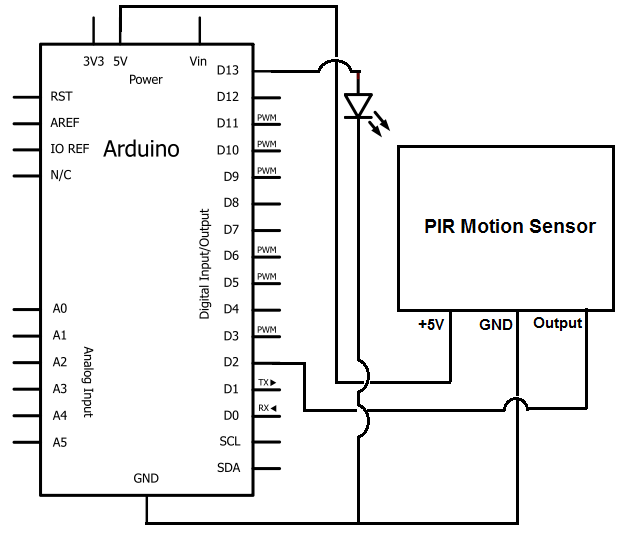
car anti theft wireless alarm circuit

This is a design circuit for an alarm. This circuit is intended for an anti-theft wireless alarm that can be used with any vehicle operating on a 6 to 12 volt DC supply system. A mini VHF FM radio-controlled transmitter is installed in the vehicle when it is parked at night in a car porch or parking lot. The receiver unit of the wireless alarm utilizes the CXA1019, a single IC-based FM radio module, which is readily available in the market at a reasonable price. The receiver is tuned to the transmitter's frequency. When the transmitter is active and the FM radio receiver is receiving signals, there is no hissing noise at the output of the receiver. Consequently, transistor T2 (BC548) does not conduct, allowing the relay driver transistor T3 to receive its forward base bias through the 10k resistor R5, thus energizing the relay. If an intruder attempts to drive the car away from the car porch, the radio link between the car (transmitter) and the alarm (receiver) is disrupted. This results in the FM radio module generating a hissing noise. The hissing AC signals are coupled to the relay switching circuit via an audio transformer. These AC signals are then rectified and filtered by diode D1 and capacitor C8, producing a positive DC voltage that provides forward bias to transistor T2. As a result, transistor T2 conducts, pulling the base of relay driver transistor T3 to ground level, deactivating the relay and activating the alarm connected via the normally closed (N/C) contacts of the relay.
The anti-theft wireless alarm circuit is designed to enhance vehicle security by utilizing a combination of RF communication and relay control mechanisms. The circuit operates within a voltage range of 6 to 12 volts DC, making it compatible with most vehicles. The transmitter, a mini VHF FM radio module, is discreetly installed in the vehicle and remains dormant when the vehicle is parked, conserving power.
In normal operation, the receiver, which employs the CXA1019 FM radio module, continuously monitors the frequency of the transmitter. When the transmitter is within range, the receiver outputs a clean signal, resulting in no audible noise. This state keeps transistor T2 in an off condition, preventing any activation of the relay driver transistor T3. The relay remains energized, ensuring that the alarm system is inactive, which is the desired state when the vehicle is secure.
In the event of theft, as soon as the vehicle is moved beyond the operational range of the transmitter, the communication link is severed. The CXA1019 begins to generate a hissing noise due to the lack of a coherent signal, which is indicative of a breach in the system. This noise is crucial as it is coupled to the relay switching circuit through an audio transformer, converting the audio signal into a form suitable for further processing.
The rectification and filtering stage, involving diode D1 and capacitor C8, is critical for converting the AC signals generated by the hissing noise into a usable DC voltage. This voltage is essential for turning on transistor T2, which in turn pulls the base of T3 to ground, effectively deactivating the relay. The relay's deactivation triggers the alarm system, alerting the owner of the unauthorized movement of the vehicle.
This circuit design not only provides a cost-effective solution for vehicle security but also illustrates the effective use of RF technology in alarm systems. The components used are widely available, making it an accessible project for hobbyists and professionals alike.This is a design circuit for alarm. This circuit is for an anti- theft wireless alarm can be used with any vehicle having 6 to 12 volt DC supply system. The mini VHF FM radio-controlled, FM transmitter is fitted in the vehicle at night when it is parked in the car porch or car park.
The receiver unit of the wireless alarm uses an CXA1019, a single IC-based FM radio module, which is freely available in the market at reasonable rate, is kept inside. This is the figure of the circuit. Receiver is tuned to the transmitter`s frequency. When the transmitter is on and the signals are being received by FM radio receiver, no hissing noise is available at the output of receiver.
Thus transistor T2 (BC548) does not conduct. This results in the relay driver transistor T3 getting its forward base bias via 10k resistor R5 and the relay gets energized. When an intruder tries to drive the car and takes it a few meters away from the car porch, the radio link between the car (transmitter) and alarm (receiver) is broken.
As a result FM radio module gene-rates hissing noise. Hissing AC signals are coupled to relay switching circuit via audio transformer. These AC signals are rectified and filtered by diode D1 and capacitor C8, and the resulting positive DC voltage provides a forward bias to transistor T2. Thus transistor T2 conducts, and it pulls the base of relay driver transistor T3 to ground level. The relay thus gets de-activated and the alarm connected via N/C contacts of relay is switched on. 🔗 External reference
The anti-theft wireless alarm circuit is designed to enhance vehicle security by utilizing a combination of RF communication and relay control mechanisms. The circuit operates within a voltage range of 6 to 12 volts DC, making it compatible with most vehicles. The transmitter, a mini VHF FM radio module, is discreetly installed in the vehicle and remains dormant when the vehicle is parked, conserving power.
In normal operation, the receiver, which employs the CXA1019 FM radio module, continuously monitors the frequency of the transmitter. When the transmitter is within range, the receiver outputs a clean signal, resulting in no audible noise. This state keeps transistor T2 in an off condition, preventing any activation of the relay driver transistor T3. The relay remains energized, ensuring that the alarm system is inactive, which is the desired state when the vehicle is secure.
In the event of theft, as soon as the vehicle is moved beyond the operational range of the transmitter, the communication link is severed. The CXA1019 begins to generate a hissing noise due to the lack of a coherent signal, which is indicative of a breach in the system. This noise is crucial as it is coupled to the relay switching circuit through an audio transformer, converting the audio signal into a form suitable for further processing.
The rectification and filtering stage, involving diode D1 and capacitor C8, is critical for converting the AC signals generated by the hissing noise into a usable DC voltage. This voltage is essential for turning on transistor T2, which in turn pulls the base of T3 to ground, effectively deactivating the relay. The relay's deactivation triggers the alarm system, alerting the owner of the unauthorized movement of the vehicle.
This circuit design not only provides a cost-effective solution for vehicle security but also illustrates the effective use of RF technology in alarm systems. The components used are widely available, making it an accessible project for hobbyists and professionals alike.This is a design circuit for alarm. This circuit is for an anti- theft wireless alarm can be used with any vehicle having 6 to 12 volt DC supply system. The mini VHF FM radio-controlled, FM transmitter is fitted in the vehicle at night when it is parked in the car porch or car park.
The receiver unit of the wireless alarm uses an CXA1019, a single IC-based FM radio module, which is freely available in the market at reasonable rate, is kept inside. This is the figure of the circuit. Receiver is tuned to the transmitter`s frequency. When the transmitter is on and the signals are being received by FM radio receiver, no hissing noise is available at the output of receiver.
Thus transistor T2 (BC548) does not conduct. This results in the relay driver transistor T3 getting its forward base bias via 10k resistor R5 and the relay gets energized. When an intruder tries to drive the car and takes it a few meters away from the car porch, the radio link between the car (transmitter) and alarm (receiver) is broken.
As a result FM radio module gene-rates hissing noise. Hissing AC signals are coupled to relay switching circuit via audio transformer. These AC signals are rectified and filtered by diode D1 and capacitor C8, and the resulting positive DC voltage provides a forward bias to transistor T2. Thus transistor T2 conducts, and it pulls the base of relay driver transistor T3 to ground level. The relay thus gets de-activated and the alarm connected via N/C contacts of relay is switched on. 🔗 External reference





